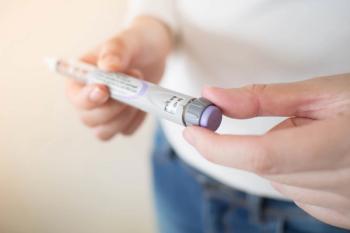
Late-breaking news: FDA seeks input on proposed policy for diagnostic tests used with targeted drug therapies
FDA has issued a new draft guidance to facilitate the development and review of companion diagnostics ? tests used to help healthcare professionals determine whether a patient with a particular disease or condition should receive a particular drug therapy or how much of the drug to give. The draft document is intended to provide companies with guidance on the agency's policy for reviewing a companion diagnostic and the corresponding therapy.
FDA has issued a new draft guidance to facilitate the development and review of companion diagnostics - tests used to help healthcare professionals determine whether a patient with a particular disease or condition should receive a particular drug therapy or how much of the drug to give. The draft document is intended to provide companies with guidance on the agency's policy for reviewing a companion diagnostic and the corresponding therapy.
One common type of companion diagnostic looks for whether a patient has a specific gene amplification or protein overexpression that could predict whether a drug might benefit the patient or lead to harm. For example, in 1998, FDA approved Herceptin (trastuzumab), a breast cancer drug designed to target HER2 gene amplification or HER2 protein overexpression. The drug was approved with a companion test, and today testing is routinely performed on women diagnosed with breast cancer to help healthcare professionals determine whether or not the patient should receive Herceptin.
"We believe that developing evidence for drugs and related diagnostic tests is very important,” Helen B. Darling, president and CEO, National Business Group on Health, Washington, D.C., told Drug Topics.
“We are still very early in evidence development, but the more we can work together and be driven by rigorous science, the better off patients will be over the long run," Darling added.
"These proposed guidelines support the development of innovative new targeted medicines and their corresponding diagnostic tests, and are intended to provide manufacturers with greater predictability," said Jeffrey Shuren, MD, director of FDA's Center for Devices and Radiological Health, in a company press release. "It is the agency's goal to help stimulate early collaborations between drug and device makers so they can develop the best medical products for treating patients."
The draft guidance also:
- Clarifies FDA's definition of a companion diagnostic;
- Recommends early engagement between FDA and manufacturers, so that the agency's expectations are included in development plans;
- Highlights FDA's intention to conduct simultaneous reviews of a drug or biologic therapy and its corresponding companion diagnostic;
- Identifies instances when FDA may approve a targeted medicine in the absence of a cleared or approved companion diagnostic.
In cases where the therapy is intended to treat a serious or life-threatening disease or condition for which there is no available or satisfactory treatment, and when the potential benefits outweigh the risks of not having a cleared or approved companion diagnostic, the therapy could be approved first, while the companion diagnostic may be approved or cleared later through the appropriate device submission process.
FDA is seeking public input on the draft guidance for 60 days. Comments can be submitted online or in writing to: Division of Dockets Management (HFA-305), FDA, 5630 Fishers Lane, Rm. 1061, Rockville, Md., 20852.
Newsletter
Pharmacy practice is always changing. Stay ahead of the curve with the Drug Topics newsletter and get the latest drug information, industry trends, and patient care tips.
























































































































